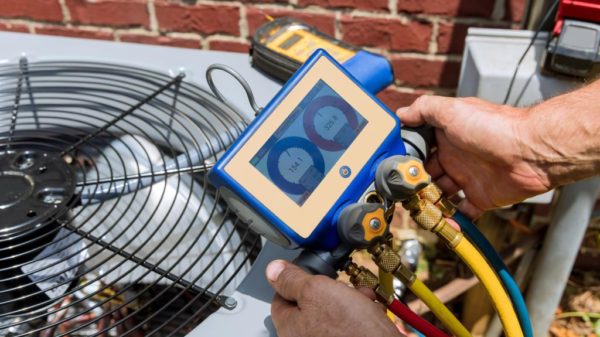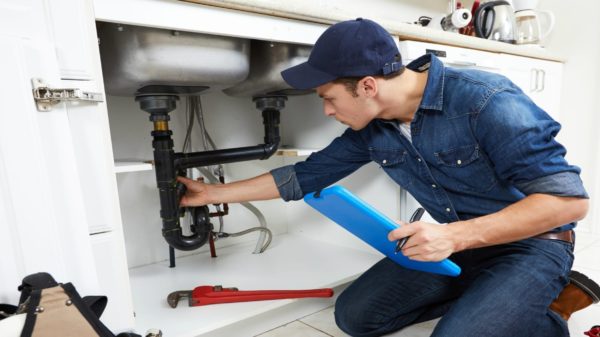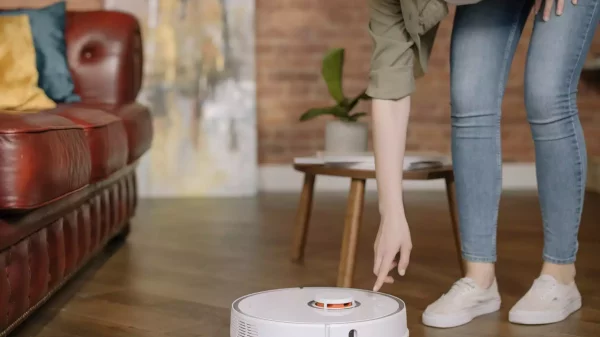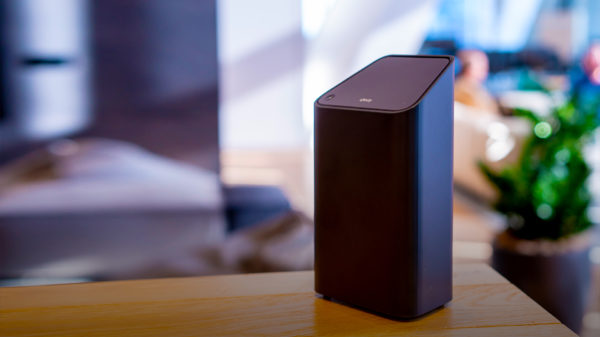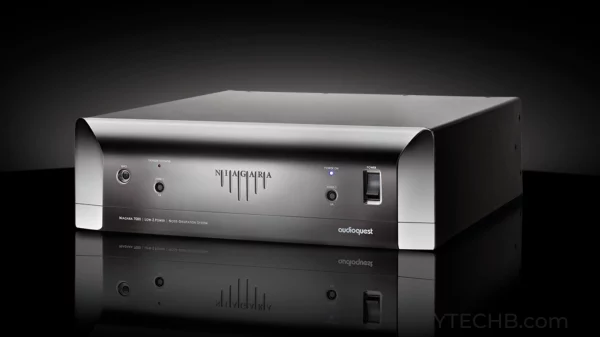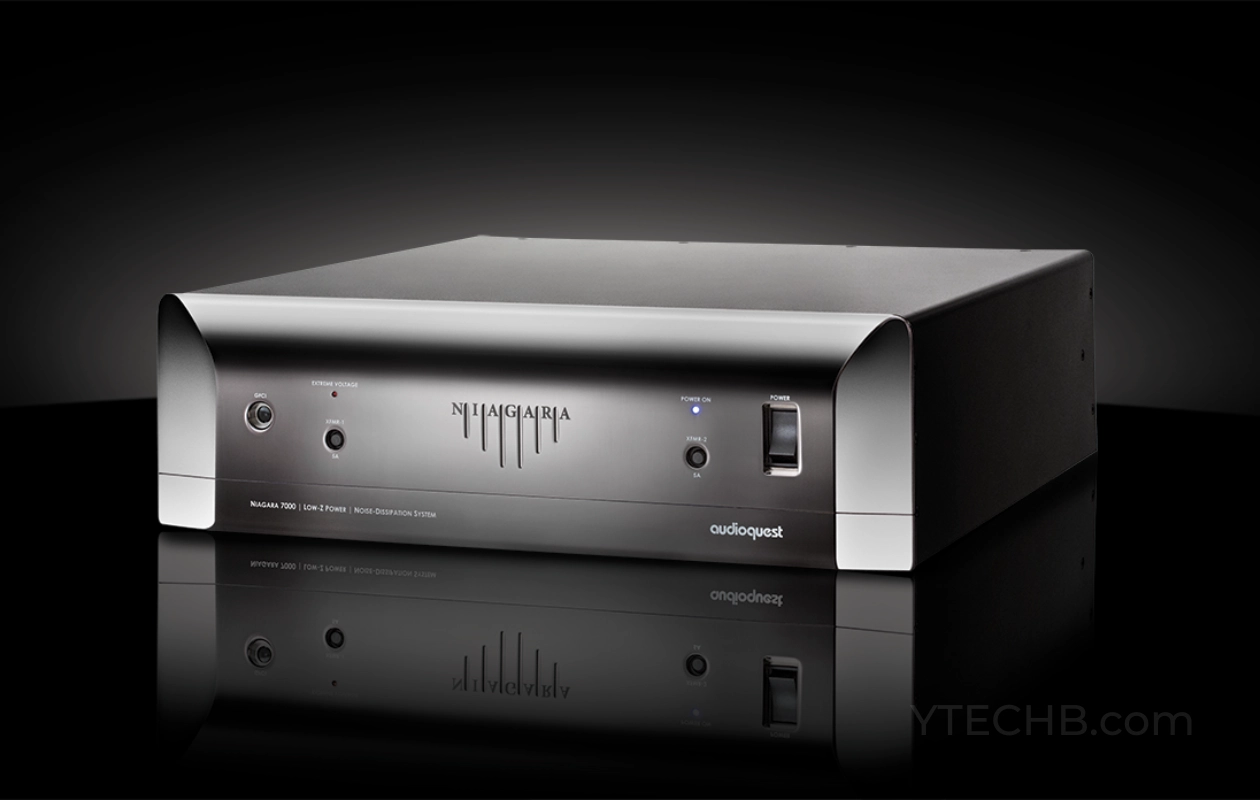home theatre power manager
Whether you are building a new home theater or just looking to add a new power supply to your current home, it’s important to understand the basics of home theatre power manager. These products can help you to avoid overloading your current power supply and can also protect your home theater from surges.
Is Surge Protector Necessary Home Theatre Power?
Whether you have an expensive home theater system or you just have a home audio system, power surges can destroy it. They can carry tens of thousands of volts and can cause damage to displays, speakers, subwoofers, and even computers and satellite systems.
Fortunately, you can protect your home theater equipment from power surges with a surge protector. A good surge suppressor can handle up to 150,000 amps of current.
Depending on the type of protection you are looking for, you can choose between plug-in and in-wall surge protectors. Using an in-wall protector will fit behind most wall plates and will also provide a sleek look.
Most surge protectors come with diagnostic LEDs that indicate when the device is protecting your equipment. They also provide information on the current, clamping voltage, and under/over voltage shutoff values.
The best surge protectors for home theater equipment are ones with a clamping voltage of 140V or higher. This will allow for more surge voltage to be applied to your equipment. It is also a good idea to choose a surge suppressor with a higher joule rating, which is a measure of energy absorption capacity.
Another thing to look for in a surge suppressor is the response time. The response time is measured in nanoseconds and is a metric of how quickly the device turns on. If the response time is less than one nanosecond, the device will turn on and off more quickly.
Is a Power Conditioner The Same as a Surge Protect
Basically, a home theater power conditioner is a device that improves the quality of the power coming out of your home’s outlets. It does this by absorbing certain levels of electrical current before blowing. This allows for clean power, cleaner sound, and a better picture.
It’s not a bad idea to have a power conditioner in your home. They’re great for protecting your expensive home theater equipment. They’re also good for reducing the effects of large appliances. They’re especially useful in areas where power outages are common, like in thunderstorm-prone areas.
In order to get the most out of a power conditioner, you need to know what to look for. A good one is the Furman PL-8C, which has nine AC power outlets. This is a high-end unit that will help protect your home theater system from the ravages of electrical surges.
A power conditioner isn’t as inexpensive as you may think. You’ll need to shell out at least $300 to get a decent model. You should also make sure you’re getting a power conditioner that has both voltage regulation and noise filtration.
The best way to pick out a good power conditioner is to consult a tech expert. You should also be aware of what your home theater needs. You don’t want to buy a unit that’s too big for your outlet. It’s also a good idea to get a unit that’s made of pure copper.
Do Power Conditioners Work?
Choosing a power conditioner for your home theater is an important decision. They’re designed to reduce background noise, boost power, and reduce EMF radiation. They’re also a great way to protect your expensive equipment.
A good power conditioner is not cheap. The top of the line model can cost anywhere from $200 to over a thousand dollars. You can even get a basic one for around $50, but they won’t do much for you.
A power conditioner does the trick by filtering out the dirty power, which is often called the “noise” in the home theater world. This type of electrical current is often inconsistent in frequency and voltage. By reducing the amount of noise, the cleaner power will help you achieve better sound quality.
The best power conditioners have several features, including automatic voltage monitoring, high-quality surge protection, and noise filtering. It’s also worth considering buying a vertical power strip for protection against lightning strikes.
Read This Also : Automation 750m Alkeon Capital Coatue 35broofbloomberg
In addition to the usual suspects, there are several new home theater power conditioners on the market. These include the Panamax MR4300, which is specially designed to be a home theater power manager. It also comes with surge protection and a lifetime warranty.
The best home theater power conditioners aren’t necessarily the most expensive. Some models are actually less than $50, and some are just plain old surge protectors. The real winners are the ones that are able to do a little bit more than add an extra outlet.
Can You Overload a Power Conditioner?
Whether you have a home theater system or not, you can benefit from a power conditioner. These devices can help protect expensive equipment from electrical fluctuations and spikes. They also enhance the sound quality of your system by filtering out noise.
There are a lot of options available. Some of them are better than others. It can be difficult to choose the best one. A good idea is to consult a professional. You can also go online to look for reviews.
The best power conditioners will have a number of features including noise reduction, spike & surge protection, automatic voltage monitoring, and high current flow capabilities. They are also simple to install and use. The best ones will cost about $300.
In addition to protecting your expensive equipment, power conditioners will also increase the life of your equipment. They will help prevent expensive speakers from frying. They will also provide cleaner, more efficient power for your home theater.
Choosing the right power manager is important to your home theater’s performance. You should consider the following factors: size, capacity, and budget. You may want to daisy-chain two power conditioners if you have light loads. You should also consider the type of protection your equipment needs. If you have a very expensive set of speakers, you will want a power conditioner that offers the highest surge protection.
It is also a good idea to consider the number of outlets. Having more than three or four will mean you will have to purchase a bigger power conditioner.
Read This Also : Hdfriday
What Are home theatre power manager?
Basically, a home theatre power manager is a special type of power board that regulates the distribution of alternating current (AC) to all of the devices in your home theater. It provides surge protection, a clean power filter, and automatic voltage monitoring, among other features.
The power manager can protect your electronics from power spikes, electrical surges, and noisy, dirty power. It can also help prolong the life of your devices. Ideally, a power manager has a rating of 500 joules, which is the ideal amount for a home theatre system.
There are many different types of power managers. Some have a lot of outlets, some have even more, and some have a bigger capacity. They are also usually a little larger in size, which makes installation easier.
Panamax is one of the most popular brands of home theater power managers. This model has nine outlets, a 15-foot power cord, and a front-mounted voltage indicator. It also features Automatic Voltage Monitoring (AVM) technology to ensure that your home theater is turned off if there is a brownout.
Another home theater power manager is the Tripp Lite Isobar, which offers a lifetime warranty. It’s designed to help prevent line noise and disruptive line noise from damaging your home theater system.
Aside from these two, there are several other devices that can be used to protect your home theater system. They include the Soundavo PMX-3300, which is a high-performance power manager. It has three groups of outlets, each with a different type of filtration. It also has an automatic reverse sequence power-off feature.
Final Thoughts for buying the Home Theatre ?
Using a power manager will not only improve the performance of your home theater system, but it will also prevent fires. This is important if you have expensive components like a receiver or subwoofer. Keeping the components safe from overheating and overloading is the best way to ensure that they last as long as possible.
Most home theater systems are made up of multiple expensive pieces of equipment. You do not want to end up replacing your high-end receiver with inferior equipment. That is why it is wise to invest in a high-end power conditioner.
There are several different types of home theatre power manager. They differ in the number of outlets and the filtration rating. Some even protect the equipment from under-voltage events.
The best power manager for your money is the Panamax MR4300. This surge protector boasts nine outlets, a 15-foot power cord, and a nifty front-mounted voltage indicator. It is also sturdy and simple to install.
The Panamax MR4300 is a good choice for those who want a power line conditioner but don’t have the budget for a high-end model. This power strip also comes with a lifetime warranty.
The Panamax MR4300’s nifty-tittles include an automatic voltage monitoring system and a level three noise filtration system. The unit also has a front-mounted USB charging port.
The MR4300 is an all-in-one home theater power manager that offers the best bang for your buck. It comes with a five-dollar-million limited lifetime warranty.
Power Cord For home theatre power manager
Whether you are looking for a new power cord for your home theater system, or you are just wondering if your current power cord is the right type to use, it is important to know what to look for before you buy. Below you will find information about the best types of power cords for your home theater, and where to find the best deals.
Absorption Rate of home theatre power manager
Buying a home theatre power manager can enhance your home theater’s performance. These devices, also called power conditioners, filter dirty power to ensure your system operates smoothly. They can also reduce background noise and improve electrical quality, which means your audio and video will sound cleaner.
home theatre power manager also have other features, such as surge protection. This helps prevent the equipment from being damaged or ruined when a power surge occurs. They can also help prevent the spread of electrical disturbances to other devices. They can be mounted on a wall or under the TV. They can also be purchased as a rack-mounted unit.
Some Power Managers, such as the PC0860, combine noise filtering with surge protection. Its unique rack-mount design blends in with your existing setup, and supports a wide range of plugs.
Aside from the obvious, a home theatre power manager can also increase your equipment’s longevity. The APC H15BLK, for example, comes with a built-in voltage controller to help reduce voltage fluctuations. Its power cord is rated to handle 500J.
UL Certification for home theatre power manager
Having a home theatre power manager can greatly improve the performance of your home theatre system. It provides surge protection to your equipment, reduces background noise and improves the electrical quality of your home.
A Power Manager can be placed on a rack, under your TV set or wall-mounted. It also has the ability to smooth out irregularities in your input power supply.
If you’re looking for a power manager that has a real-time analysis of your devices’ power status, then the Furman PL-8C is a good choice. It features SMP AC filter protection, Extreme Voltage Shutdown, Linear Filtering Technology and Smooth Track LED Rack Lights.
The PC0860 power manager has a detachable rack that can blend with your existing setup. It also comes with a 15-foot cord, an under-counter installation option and a variety of adapters. It also has a red light to alert you if you’re in overvoltage.
The Panamax MR4300 is another power manager with a few unique features. It has nine filtered outlets and includes Rotating Media Lights. It also has Automatic Voltage Monitoring (AVM) technology, which allows it to shut off the power to your home theater when it detects overvoltage.
Voltage in home theatre power manager
Whether you want to add a new home theatre power manager or upgrade your current one, there are a few things to consider before you buy. This guide will help you decide which power manager is best for your needs.
First, you need to consider the amount of space you have available for your home theater system. Some power managers are wall-mounted, while others can be mounted on a rack. You can also choose a model that can be placed under your TV set.
Another feature to look for is the number of outlets. A power manager should be able to handle a range of plugs, from standard to large plugs. You should also consider the weight of the unit.
A power manager may also contain surge protectors. These devices are designed to arrest disturbances before they reach your home theater. They can also help to filter out noise.
Aside from protecting your speakers and audio equipment, a good power manager can help you reduce EMF fluctuations. All electrical appliances create low-level EMFs. These EMFs aren’t harmful, but they can be disruptive to the electromagnetic field created by devices.
Surge Protection for home theatre power manager
Using a power manager for your home theatre can enhance the performance of your system and provide top-notch surge protection. These managers can help you save money in the long run by ensuring your system doesn’t suffer from power spikes and voltage fluctuations.
There are a lot of products available on the market, but you need to know what to look for. The best ones will protect your expensive electronics and give you a better overall performance. They also come with additional features that increase their functionality. These include surge protectors and control managers. They can reduce noise and increase the quality of sound in your home theater.
These devices are designed to eliminate dirty power from the AC power, which can cause disturbances in your low-level signals. They also lower EMF fluctuations. They can protect your electronics from voltage fluctuations and lightning strikes. They can be placed under your television or shelf mounted. They can last up to 20 years and can increase the lifespan of your equipment.
They can be found in a wide variety of price ranges. You can even find some that are priced at just a few dollars.
Best Budget for home theatre power manager
Buying a home theatre power manager isn’t a task that’s for the faint of heart. There are many to choose from, and the options can be overwhelming. Here are a few things to consider when shopping for one.
First and foremost, the biggest question is what do you need? Several features may be more important than others. A power manager is great for protecting your electronics from sudden surges.
The best budget for a power manager will depend on what you need. If you just need to use a power strip for your TV and cable box, you may be better off with a cheaper model. If you need a lot of outlets, you’ll have to spend a little more.
The StarTech PDU Power Strip is an affordable option. It sports eight NEMA 5-15 outlets, two LED indicators, and a rugged steel casing. You’ll also get six feet of power cable.
Another good option is the Furman PL-8C. This model features eight outlets that can be individually controlled to provide different power levels for various devices. It also has a series multi-stage protection system and linear noise filtration technology. It’s a bargain at under $350.
Frequently Asked Questions About HomeTheatre Power
Choosing the right home theatre power manager is a crucial step to improving the performance of your home theatre. This device helps reduce the noise generated by electronic devices and prevents electrical fires.
Choosing the best power manager for your home theater system requires some research. You need to consider the size and number of outlets, as well as the quality of the surge protection. You can also install it under your TV or rack it on the wall.
The main goal of a power manager is to filter unclean electricity and control voltage fluctuations. The good ones are able to reduce the noise generated by electronics and protect your expensive speakers from damage.
A good power manager should be able to handle a 500 joules of electricity. It should also have a long power cord. You should also get at least two extra plugs so that you can expand your home theatre system.
The best power manager is a UL-certified model, which means it is approved by Underwriters Laboratories. It is also a good idea to get a 3- to 5-year guarantee.
Is Surge Protector Necessary?
Using a home theater power manager is an important tool for maintaining the quality of your sound and electrical equipment. Purchasing one will help you safeguard your expensive home theater system from power surges. It can also improve performance.
You’ll need to buy a home theater power manager that meets your needs and budget. Ideally, you’ll want to purchase a unit with an energy absorption rating of 500J. The power manager should have enough outlets to cover your home theatre system.
Power managers can be wall-mounted, or they can be affixed under the TV or on a rack. A power manager should be sturdy, lightweight, and durable. The best managers are UL-certified, but you can find dependable ones without the certification.
The Panamax MR4300 is a popular power manager that has a sleek, modern design and offers a number of advanced features. The device comes with over nine outlets, automatic voltage monitoring, and a red LED display.
Other important features include EMI/RFI noise mitigation and six-outlet steel power blocks. A circuit breaker and illuminated ON/OFF switch are also included.
Is a Power Conditioner The Same as a Surge Protect
Unlike surge protectors, which only protect your equipment from power spikes, a power conditioner is designed to smooth out voltage fluctuations, reduce noise and improve the quality of your power. They’re usually transformer-based, but they also come in the form of electronic components.
If you’re in the market for a power conditioner, you’re probably wondering which one is the best. Unfortunately, manufacturers aren’t always clear on which ones work better. They also don’t always mention how much they cost.
For instance, while a power strip might have the most outlets, you might only be buying the cheapest model. You might even be getting less protection than you really need.
On the other hand, a power conditioner may be more expensive, but it’s also worth the money. These devices are designed to keep your equipment running smoothly, and can even help prevent power outages. They can be found in a variety of forms, including transformer-based, plug-in, and battery-powered.
They are usually built with a voltage meter, which is handy for monitoring the power you’re using. They also have a number of other cool features, including EMI/RFI shielding, power reserve, and noise reduction.
How to Choose the Best Home Theatre Power Conditioner
Whether you are planning to replace your existing power conditioner or are looking for a new one, there are some things to consider before choosing one. You can use the following tips to make sure you are getting the best power manager for your home.
Are home theatre power manager Worth It?
Investing in a home theatre power manager can be a worthwhile investment, especially if you live in an area that experiences frequent power surges. These devices can help you reduce your electricity bill, increase the quality of your movies and TV shows, and improve the overall audiovisual experience.
These devices will also cut back on your power consumption when you are not using them. Some even have a USB port for charging your mobile devices. Some even come with a guarantee to protect your equipment.
A good power manager can protect you from expensive electronics. Some even have a built in circuit breaker. They will automatically disconnect your gadgets if a surge happens.
You can get a power manager for as little as $200. You will likely need to spend more, however, if you want a more robust model with more advanced features.
There are several kinds of home theatre power manager. Some are wall mounted, while others are shelf mounted. The most popular types will usually have at least six outlets. It is important to ensure that the device you choose is compatible with all the appliances you plan to use.
Belkin 12-Outlet Prof. 4320 Joules SurgeMaster
Whether you’re protecting your computer, TV, or audio equipment, Belkin 12-Outlet is one of the best surge protectors for home theaters. This surge protector has a number of features to protect your devices from surges and damaging voltage fluctuations. It also offers superior circuitry to reduce electromagnetic interference and radio frequency interference.
With a heavy duty design, this power strip provides optimal power flow to your devices. It also features oversized Metal Oxide Varistors and coaxial cable protection. These features are designed to protect your devices from damage and help you get the most out of your entertainment system.
The power strip comes with a lifetime product warranty. Belkin also offers a Connected Equipment Warranty that guarantees repairs for damaged electronic equipment resulting from an electrical surge. It also includes a red “Not-Grounded” indicator light.
Aside from ensuring your equipment is protected from damage, this AC surge protector offers a pullout LED voltmeter display and an integrated circuit breaker for overload protection. It also features an auto-shutdown feature.
The power strip has a generous eight-foot cord. It’s also designed to fit behind furniture.
Soundavo PMX-3300
Designed with home theatre systems in mind, the Soundavo PMX-3300 offers a high power amplification and high tech protection for your equipment. A nifty LED lamp illuminates the rack and makes sure you don’t trip on bare electrical surfaces. It also features a reversible LED meter display and an integrated amplifier. Among its features are Bluetooth connectivity, RFI noise filtration and an EMI noise filter.
The PMX-3300 isn’t cheap, but it’s worth the investment. It has a few features that aren’t commonly found in a budget power conditioner. Aside from the standard circuit breaker, it has a switchable voltage regulator, which allows for better power management. It even has a battery backup.
The PMX-3300 has eight power outlets. Those outlets are organized into three groups, which are labeled the Digital, Analog, and High-Current. Each group has a different type of filtration.
There’s a small downside to the PMX-3300, though: it’s not USB-compatible. This means that you won’t be able to use it to charge your smartphone or iPod. You can, however, connect to your computer’s USB port for charging purposes.
Pyle 2-Channel Bluetooth Powered Amplifier
Having an integrated Bluetooth 2.1 wireless streaming receiver is a nice feature of the Pyle 2-Channel Bluetooth Powered Power Conditioner. The built-in wireless speaker is compatible with most Bluetooth devices and can give you the power to stream music at 50 watts per channel. You also get an XLR input connector and Speak-On output connectors.
Aside from the built-in Bluetooth receiver, the Pyle 2-Channel Bluetooth POWER Conditioner also includes a premium feature – a two-channel Bluetooth audio player. This feature lets you play back your favourite songs through Bluetooth devices. The unit also features a wide range of playback options. It can also be used with a home theater system.
The Pyle 2-Channel Bluetooth POWER Amplifier features a dual ventilation cooling fan system that will keep your speakers cool. It also has a pair of LED indicators for overload protection. It can produce up to 50 watts per channel and is designed to work with any pair of speakers. You can use the unit with a home theater system, a stereo pair, or any other audio source.
Tripp Lite Isobar 10 Outlet
Whether you need power for your home office or entertainment setup, the Tripp Lite Isobar 10 Outlet Premium Power Conditioner is an excellent choice. This slick surge suppressor comes with a slew of features, including a near-indestructible all-metal case, multiple metal oxide varistors and a noise-filtering system. This is one of the most comprehensive surge-stopping devices on the market today, and is the perfect choice for home or office electronics.
Its main draw is the aforementioned all-metal case, which is made to stand up to the rigors of modern home or office electronics. It’s also got a generous 8-foot cord and two 2.4-amp USB ports for charging up your smartphone or tablet. The Tripp Lite Isobar also features an in-house tech support team and a comprehensive warranty, including a lifetime guarantee.
The other notable feature is the Isobar’s patented noise-filtering system, which effectively filters out disruptive line noise, EMI/RFI interference and high-level surges. It’s also got a nice-sized selection of outlets, with a layout compatible with a variety of plug sizes.
There’s also the Isobar’s patented’magic LED’, which will replace a damaged LED in the event of a power outage. It’s also got a pretty impressive list of accessories, including a nifty mounting kit. Lastly, the Tripp Lite Isobar has an official UL certification, and has been independently verified to stop surges.
How to Choose the Best home theatre power manager
Choosing a good home theatre power manager is essential. These devices allow you to get the most out of your home theater system, and they help you minimize the impact of power surges on your electronic equipment. In addition, they can also help you conserve energy.
Whether you have a high-end home theatre or a more affordable model, you should consider a power manager as part of your home’s electrical system. They are effective at filtering unwanted EMF disturbances, reducing background noise, and improving the performance of your audio and video systems. They can help you reduce the energy you consume when not in use, and they can even automate tasks, such as turning on and off devices before and after a movie.
Some home theatre power manager can be wall mounted or can fit on a rack. You should choose a model that can work with your home theater’s installed speakers and devices. They can also be UL certified, giving them more authority.
Some of the most important features to look for in a power manager include the number of outlets, the length of the power cable, and the physical size. You should also keep in mind that a quality device will improve the performance and extend the life of your devices.
Size and Capacity of home theatre power manager
Purchasing a home theatre power manager can be a daunting task. With so many options to choose from, it can be hard to know which one will suit your needs. There are many factors to consider, including the size, capacity, and features of each.
The size and capacity of a power manager are largely dependent on how many outlets it has. In addition, the length of the power cord is also important. Ideally, the cord should be long enough to give you enough room to install the device. The cable should be lightweight, dependable, and failsafe.
A quality power manager will regulate the amount of power going to your devices, while preventing wasted energy. It will also help you increase the lifespan of your devices.
A power manager can be used in offices, bedrooms, and living rooms. It can also save you money on your electric bill. It can reduce background noise, and can even dampen buzzing sounds.
A good power manager will come with a three-to-five-year warranty. It can also come with a UL certification, which increases its credibility.
Number of Outlets in home theatre power manager
Choosing a home theatre power manager can be difficult, but there are certain things to keep in mind. The first thing you should look for is a power cord that is both reliable and lightweight. Also, the power cord should be long enough for easy installation.
Another feature to consider is surge protection. This type of protection will prevent a power surge from destroying your home theatre system. The device will automatically disconnect itself from the power supply once it senses a surge.
In addition, you should ensure that the power manager is UL certified. This will boost the power manager’s credibility. The power manager should be able to handle cable and phone lines.
You may want to opt for a power manager that offers a USB port for charging mobile devices. A high-end power manager will provide more advanced features, including a noise reduction feature.
You should also consider the size of the power manager. While a small power manager can be wall mounted, larger power managers will require additional installation space.
The Benefits of Using a home theatre power manager
Using a home theatre power manager is a great way to ensure that your TV and sound equipment is always getting the power it needs. It also makes it easier for you to check that all of your devices are getting the correct voltage, which can be very difficult to do without a power manager.
Are home theatre power manager Worth It?
Using a power manager can save you a lot of money on electricity bills. There are many different kinds on the market, so you will need to decide which one will work best for you. They can help you turn on and off devices before and after the movie starts, which is a great way to conserve energy.
They also provide you with a stable electric power for your electronic gadgets. These devices can be used in offices, bedrooms, and even living rooms.
They can also cut back on power consumption when you are not using them. They can be set to automatically turn on and off specific appliances at specific times, which will save you a ton of money on your power bill.
They can also tell you exactly how much energy your devices are using. You can use these to schedule your appliances to run during peak hours, which will lower your bill.
The most important aspect of any power manager is its ability to prevent power spikes. This will protect all your equipment from being damaged by a sudden voltage change.
Why Do You Need a Power Manager For Your Home Thea
Using a home theatre power manager is an excellent way to protect your television, audio system, and other electronics from unexpected surges, under-power, and over-voltages. Not only does a power manager improve the performance of your home theatre, it also helps to save you money.
Power managers can be purchased for as little as $200 or as much as $500. You should choose a power manager based on its features and capabilities. The higher priced models generally have better protection, but you will have to pay more for them.
Choosing a power manager can be a daunting task. It’s a good idea to learn about the different types of devices available. It’s especially important to choose one that’s designed to fit your specific needs. Some of the cheaper units will have fewer outlets, while more expensive ones are meant for multi-socket systems.
When choosing a power manager, look for one that includes a UL certification. This is important because it means the unit has met safety standards.
A good home theatre power manager should include a surge protector. These devices divert excess energy to grounding wires, preventing sudden surges of energy. They also prevent electrical fires.
Panamax MR4300 – Best Overall
MR4300 is one of the best power managers for home theatre. It is a powerful surge protector that can protect your audio/video equipment from power spikes. With nine outlets, this device can provide reliable and convenient protection for your home theater.
The Panamax MR4300 is designed to protect your home theater system from damaging power surges. It features an automatic voltage monitoring (AVM) system that continuously monitors incoming power and disengages power when it detects unsafe voltage levels. It also includes an active noise cancellation feature that minimizes the static noises produced by your audio equipment.
The front panel of the MR4300 includes a USB port for charging electronic devices. The unit also has a dedicated front outlet, which is useful for providing power to audio devices.
It also has an automatic reverse sequence power off feature, which helps to protect your equipment from electrical surges. It has an RJ11 port that can connect to a modem and a phone line. It has an easy-to-read LED display that helps you to keep track of the current voltage.
Why Is This the Best home theatre power manager ?
Among many power management systems, Panamax MR4300 is one of the best. It is a power line conditioner that is specially designed to protect home theatres. It is easy to install and has nine outlets, which makes it ideal for home theaters.
It also has an Automatic Voltage Monitoring system. This monitors the input power and cuts power if it detects a spike. It has a built-in circuit breaker and noise protection. It also includes a front-mounted voltage indicator.
The Panamax MR4300 is a sturdy device that comes with a lifetime warranty. It is also equipped with an uninterruptible power supply, which provides emergency power when the input power is shut off. It also has a USB charging port.
Aside from that, the MR4300 also has a level 3 noise filtration. This ensures that the home theatre’s audio and video equipment get the most from the electricity they receive.
Lastly, the MR4300 has a 15-foot power cord. This allows for safe reconnecting when the voltage returns to normal levels. Its LED display is helpful in keeping track of the current voltage.
Panamax MR4000 8-Outlet – Budget Pick
Buying a power manager for your home theatre system can be a daunting task. There are so many options to choose from that it can be hard to decide which one is the best. While it’s important to buy a device that will work with all your devices, it’s also important to make sure that you buy a device that has a decent wattage capacity.
Panamax is one of the leading manufacturers of power conditioners. Their products are designed with the latest electronic components and are renowned for their quality. Their home theatre power manager, the Panamax MR4000, comes with an LED display and clicky buttons to help you manage power. It also features a surge monitoring system and a dual diode structure for protection.
The Panamax MR4000 is available for purchase at physical outlets or through an authorized reseller. It comes with a limited warranty. It requires a 120V power source to function. It has 14 American wire gauge standards and a bright LED display that allows you to see the current stability level.
Panamax MR4300 9-Outlet – Premium Pick
Using a power manager will allow you to automate the power on and off tasks and also cut back on power consumption while not in use. This can help extend the life of your equipment and save on your energy bill.
A good home theatre power manager will protect your audio equipment from voltage fluctuations and overheating. In addition, they will automatically shut off devices if there is an alarming voltage level. If the normal levels of voltage return, the manager will resume.
The Panamax MR4300 is one of the most advanced and reliable home theatre power manager on the market today. It features a USB port, which is ideal for charging electronic devices. It also includes a front-mounted voltage indicator and a level three noise filter to ensure that the acoustics in your home theater remain clear.
The Panamax MR4300 comes with a limited lifetime warranty, which means that you are protected from any defects in the device. It is easy to install and provides great performance. Its modern design and feature-packed functionality make it one of the best value-for-money products in its class.
Furman PL-8C 15 Amp – The Best Power Conditioner
Whether you’re looking for a power conditioner to protect your electronics, or just a way to maintain the performance of your audio/video components, you’ll find the Furman PL-8C 15 Amp is the perfect solution. Using advanced and patented technology, this device will safely absorb dangerous voltage spikes while ensuring optimal performance.
The Furman PL-8C is a powerful and innovative AC power conditioner, and one of the best values on the market. It features a front panel AC outlet, and is suitable for both analog and digital equipment. It is also fitted with a built-in circuit breaker, preventing damage to connected devices.
The PL-8C also offers Linear Filtering Technology, which enables the unit to provide clean and noise free AC power to your equipment. Additionally, the unit features isolated power banks, minimizing interference. A robust 14 AWG 10 foot AC cord is supplied with the unit.
The power conditioner also includes basic level RFI/EMI filters, a digital ammeter, and three delayed outlet groups. The delayed group allows the user to power up devices in a specific order.
How many rack units is a Furman power conditioner?
Using a power conditioner can prevent power problems from affecting your rig. Bad power can cause a wide range of damage, from burning transformers to reformatting hard drives.
Power conditioners provide a number of benefits, including RFI/EMI noise reduction, protection from abnormal power circuit conditions, and power spike and surge protection. However, not all power conditioners are created equal. Some are more affordable than others. Furman offers power conditioners in a variety of prices. Depending on your needs, a Furman power conditioner may be right for you.
The Furman M-8×2 is a rackmountable, low-cost power conditioner. Its unique design allows it to fit in small spaces and increase the sound quality of your system. The M-8×2 also comes with two discreet illumination light fixtures. These lights can be adjusted to the optimum brightness for your equipment.
Another power conditioner worthy of note is the Furman PL-Plus C. This unit features a series of LED rack lights, an advanced SMP+ circuit, and a segmented LED voltmeter. These features allow it to protect against power spikes and surges while protecting your valuable equipment.
Read This Post Also : What happened to the Manga stream?



